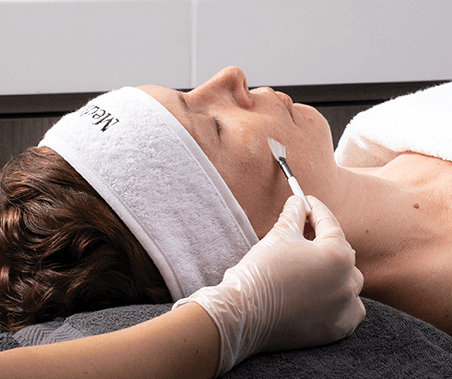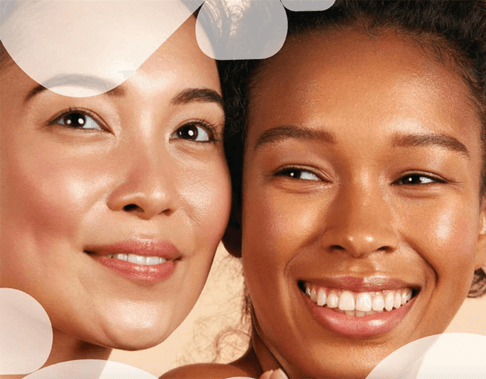The sun that we love so much has a profound and prolonged effect not just on our environment but on our skin too. Exposure to the ultra-violet rays causes changes to the skin that is not always beneficial such as premature ageing and different types of skin cancers. Although we need the sun to metabolise certain vital vitamins our bodies need to remain healthy, the long-term constant exposure will causes irreparable irreversible damage that is quite often not immediately visible.
Dr Thomas Fitzpatrick developed the Fitzpatrick Skin Scale to help us analyse the skin type’s tolerance to sun exposure. Although Asian and Black skins contain more melanin giving them greater protection from the harmful rays of the sun then Caucasian skins, they too can suffer from over-exposure to the sun’s rays resulting in pigmentation, dark marks or patches. Wearing a good sun-protection is a must for all skin types regardless of ethnicity as the damage ultra-violet rays such as UVA or UVB do can never be underestimated.
KNOW YOUR SUN RAYS
The sun’s rays are classed in three different categories: UVA; UVB & UVC. Their classification is based on their wave length from the Sun to Earth. UVA & UVB are the most harmful as they reach the Earth, UVC does not.
|
UVA |
Always present even on a cloudy day. Can penetrate clothing & glass; Long rays | The kind of rays used in tanning salons; penetrates into the dermis damaging cells leading to leathery skin & wrinkles; Depletes Collagen & Elastin leaving you with sagging skin | Causes retinal damage; photo-ageing; Cancer; Using Sunbeds before aged 30 increases risk of skin cancer; Damage is not immediately visible but will show in later years |
| UVB | These rays are more prevalent in summer are not the same strength all year round; Reflect off water & snow; Shorter rays; Some are absorbed by Earth’s Ozone layer | These are the rays people mean when they say ‘Keep out of the Midday Sun!’; Penetrates the Epidermis; Accelerates melanin production; Provides you with Vitamin D | Gives you sunburn; Cancer; Skin disorders; Weakens immune system; Alters the distribution & function of white blood cells |
| UVC | These rays are unable to reach Earth. | The Ozone Layer and Oxygen over Earth prevent their penetration | No harm done as they are absorbed by the layers above Earth |
HOW TO PROTECT YOURSELF
Avoid the sun during peak hours. Generally, this is between 10 a.m. and 4 p.m. Water, snow, sand and concrete reflect light and increase the risk of sunburn. Wear sun protective clothing. This includes pants, shirts with long sleeves, sunglasses and hats. Use sunscreen. Look for broad-spectrum* coverage with an SPF of at least 30. Apply sunscreen generously, and reapply every two hours — or more often if you’re swimming or sweating.
*Broad Spectrum – There are two types of UV light that can harm your skin — UVA and UVB. A broad-spectrum sunscreen protects you from both. UVA rays can prematurely age your skin, causing wrinkling and age spots. UVB rays can burn your skin. Too much exposure to UVA or UVB rays can cause skin cancer. The best sunscreen offers protection from UV light.
WHAT IS SPF?
SPF stands for Sun Protection Factor. SPF shows how well it protects you against UVB rays. (UVA protection isn’t rated.) Manufacturers calculate SPF based on how long it takes to sunburn skin treated with the sunscreen as compared to skin with no sunscreen. Experts recommend using a sunscreen with an SPF of at least 30. Sunscreens with SPFs greater than 30 provide only a small increase in UV protection and high-number SPFs last the same amount of time as low-number SPFs.
Sunscreen is often not applied thoroughly or thickly enough, and it can be washed off during swimming or sweating. As a result, sunscreen might be less effective than the SPF number suggests.
WHAT DOES WATER RESISTANT MEAN?
If it says water resistant it means that the SPF is maintained for up to 40 minutes in water. If it says very water resistant means the SPF is maintained for 80 minutes in water
WHEN YOU USE SUNSCREEN:
- Apply generous amounts of sunscreen to dry skin 15 minutes before you go outdoors.
- Use sunscreen on all skin surfaces that will be exposed to the sun, such as your neck, the tops of your feet, your ears and the top of your head. Apply a lip balm or lipstick with an SPF to your lips.
- Check the sunscreen’s expiration date.
- Avoid using sunscreen on children younger than age 6 months. Instead, try to limit sun exposure.
- Since UV light can pass through clouds, use sunscreen even when it’s cloudy. Use sunscreen year-round, but don’t let any product lull you into a false sense of security about sun exposure. A combination of shade, clothing, sunscreen and common sense is your best bet.
THE FITZPATRICK SCALE
Below is a Sun Protection guide using the Fitzpatrick Scale to help you buy the correct Sun protection.
PLEASE NOTE: this is only a guide and you must take into consideration the intensity of the Sun and how much you will be exposed, to wherever you are.
| SKIN
TYPE |
APPEARANCE | REACTION TO SUN EXPOSURE | AWARENESS | SUN
INTENSITY & SPF GUIDE |
| TYPE 1 | Very fair; Blonde; Red hair; Light coloured eyes; Freckles | Burns easily; Never tans; Very sun-sensitive | Great risk of cancer; Always wear high SPF sun protection; Wear hat & sunglasses; Check skin regularly for any abnormalities; Possibility of skin cancer
|
LOW: SPF 15
MEDIUM: SPF 15-30 HIGH: SPF 30-45 RECOMMENDED PRODUCTS: Environ: SPF15 Medik8 Broad Spectrum: SPF 30 Vitage: SPF 30 Priori: SPF45 Jane Iredale Make Up: Powerful on-the-go Sun Protection that is weightless & dry with Physical SPF30 Broad Spectrum for the Face, Body & Scalp. Can wear alone or over make up. Pure Pressed Mineral Powder A foundation, powder, concealer and broad spectrum sunscreen with SPF 20 UVB/UVA. Made from micronized minerals, free of synthetic chemicals, oil free and weightless & water resistant to 40 minutes. Dream Tint – Tinted Moisturiser SPF 15 broad spectrum (UVA/UVB) sun protection. Reef safe. Water resistant to 40 minutes. Recommended by The Skin Cancer Foundation as an effective broad spectrum sunscreen. Glow Time – Full Coverage Contains SPF 25 or SPF 17* broad spectrum (UVA/UVB) sun protection. Water resistant to 40 minutes. Reef safe. Recommended by The Skin Cancer Foundation as an effective broad spectrum sunscreen. * SPF 25 – shades: BB1, BB3, BB4, BB5,BB6, BB7 and BB8. SPF 17 – shades: BB9, BB11 and BB12 Enlighten Concealer Protects with broad spectrum (UVA/UVB) sun protection. Shades 0-2 SPF 30 and Shades 3-4 SPF 20 Lip Drink – Lip Balm Broad spectrum SPF 15 sunscreen. Reef safe. Recommended by The Skin Cancer Foundation as an effective broad spectrum sunscreen. |
| TYPE 2 | Fair; Blonde; Red hair;
Light colour eyes |
Burns Easily; Tans with difficulty; Mild sun-sensitivity
|
As for TYPE 1 |
|
| TYPE 3 | Fair; Fair hair;
Varied eye colour |
Can burn; Tans gradually; Mild sun-sensitivity | Skin still vulnerable; Always wear high SPF sun protection; Wear hat & sunglasses; Check skin regularly for any abnormalities; Possibility of skin cancer
|
|
| TYPE 4 | Moderate Pigmentation;
Varied eye colour |
Rarely burns;
Tans easily; Little sun-sensitivity |
Skin still vulnerable; Wear SPF sun protection; Wear hat & sunglasses; Check skin regularly for any abnormalities
|
|
| TYPE 5 | Medium to heavy pigmentation; Dark/Varied eye colour | Rarely burns; Tans easily; Least sun-sensitivity | As for TYPE 4 | |
| TYPE 6 | Black skin; Deep pigmentation | Tans easily; Tends not to burn; Least sun-sensitivity | Not vulnerable; Wear low SPF sun-protection; UV can damage eyes so wear hat or sunglasses; Avoid excessive exposure
|





